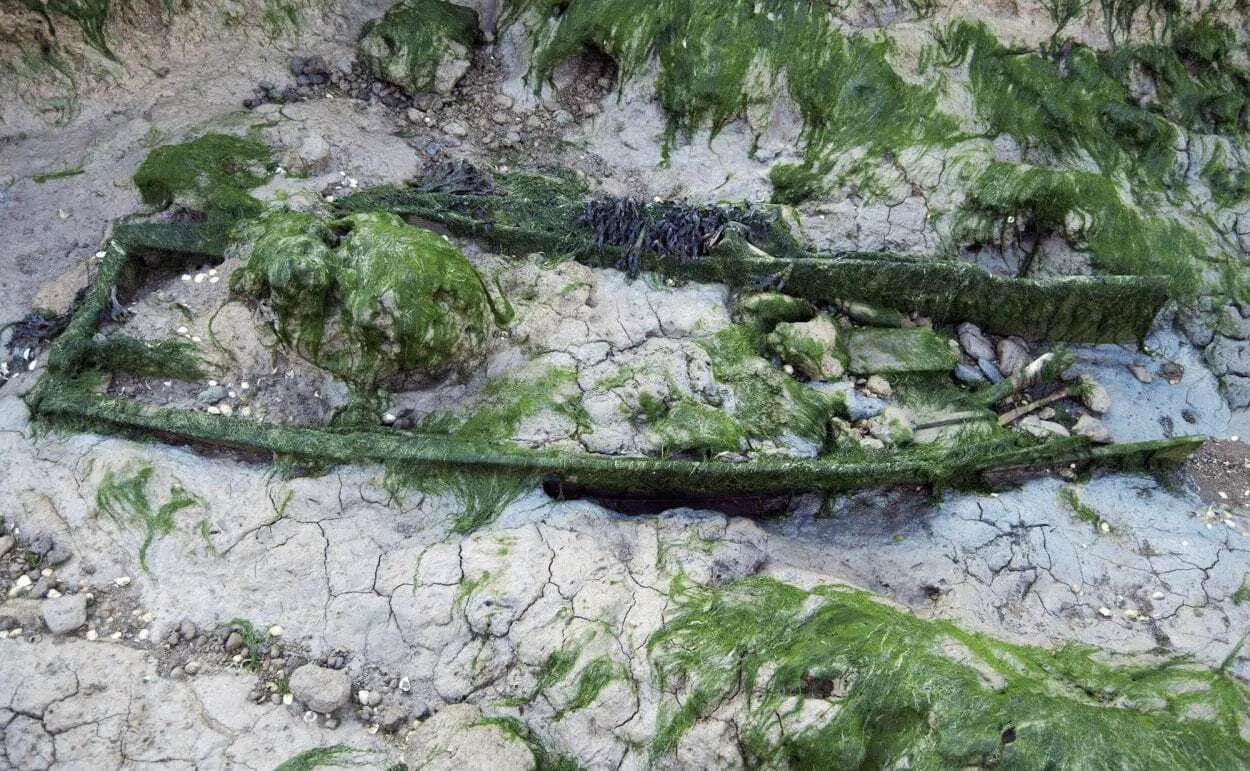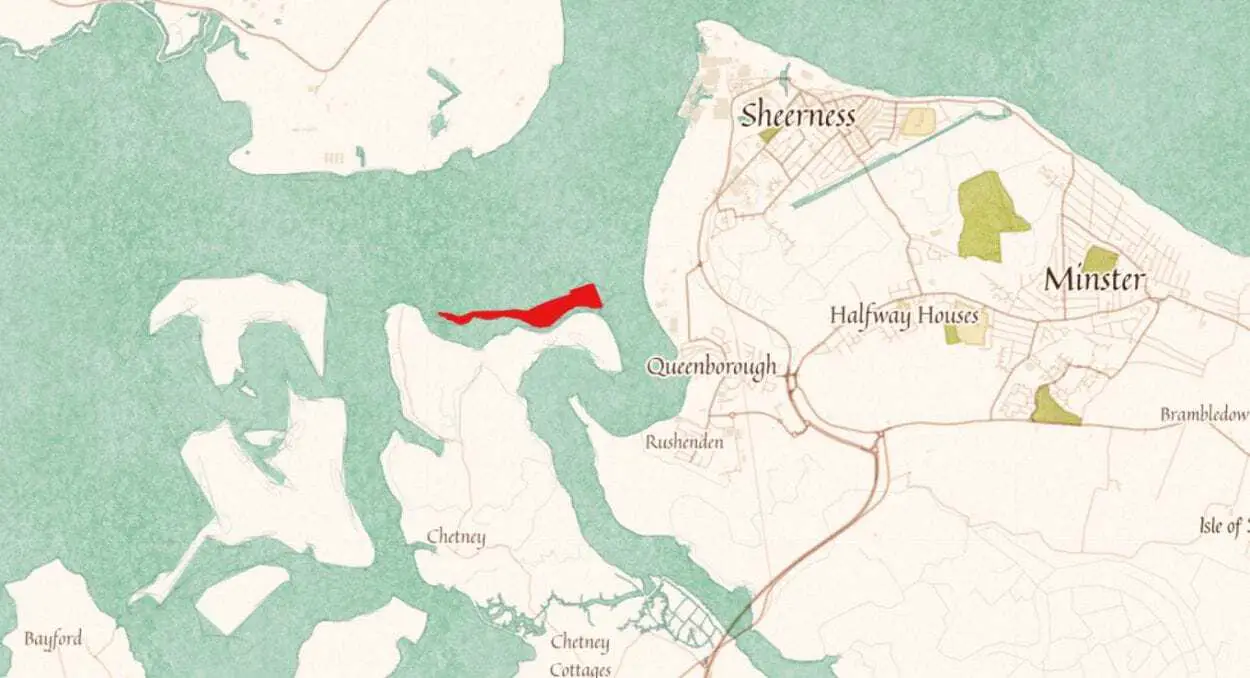Located in the Medway estuary near the Isle of Sheppey in Kent, England, lies Deadman’s Island, a small uninspiring stretch of land that contains a dark secret.
Over generations, this uninhabited mudbank has inspired tales of supernatural devil dogs, bodies buried without their skulls, and brain-eating ghouls to scare the local children from venturing to close to its lonely shores.
The truth behind the island stems back to the end of the Napoleonic Wars. At the war’s conclusion, some of the naval vessels were repurposed and converted into stationary floating prisons called hulks.

The ships were rendered inoperable or unseaworthy, stripped of their mast, rigging and sails. Their gun ports were replaced with steel bars and the gun decks fitted with cells to hold hundreds of convicts, with boys as young as ten who were sentenced to the hulks for petty crimes by the draconian penal laws of the period.
Within the Chatham area of the Medway, historical records note at least 10 prison hulks throughout the late 18th and 19th century that included the HMS Canada, HMS Cumberland (renamed Fortitude), HMS Dolphin (renamed Dolphin), HMS Euryalus, HMS Ganymede, HMS Leven, HMS Leviathan and HMS Edgar (renamed Retribution).
The hulks had squalid filthy conditions and were a festering ground for disease and illness. Outbreaks of cholera were commonplace, caused by eating food or drinking water contaminated with a bacterium called Vibrio cholera that often resulted in death.
The inmates were denied a proper burial, as the authorities had to legally dispose of the numerous infected corpses and prevent further outbreaks so the bodies were placed in unmarked graves in isolated locations on the Medway mudflats such as Deadman’s Island.

Originally buried in wooden coffins under six feet of mud, coastal erosion and rising sea levels over the past 200 years have washed away the mud on the island to expose hundreds of human remains at times of low tide.
The surface of Deadman’s Island literally lives up to the name, a scene from a macabre horror movie with human skulls, teeth, and vertebrae littering the shoreline and dozens of exposed coffins and bodies. Identification of the remains is impossible and the tides of the Medway continuously redeposit body parts with the ongoing erosion. Eventually, Deadman’s Island and its hundreds of lost souls will be taken by the elements and will succumb to the sea.
Today the island is owned by Natural England and is also a Site of Special Scientific Interest (SSSI), with access restricted (only accessible with permission) to protect the nesting and breeding of birds under the Ramsar Convention.
Header Image Credit : Adam Chodzko (www.adamchodzko.com) – Replicated with permission





